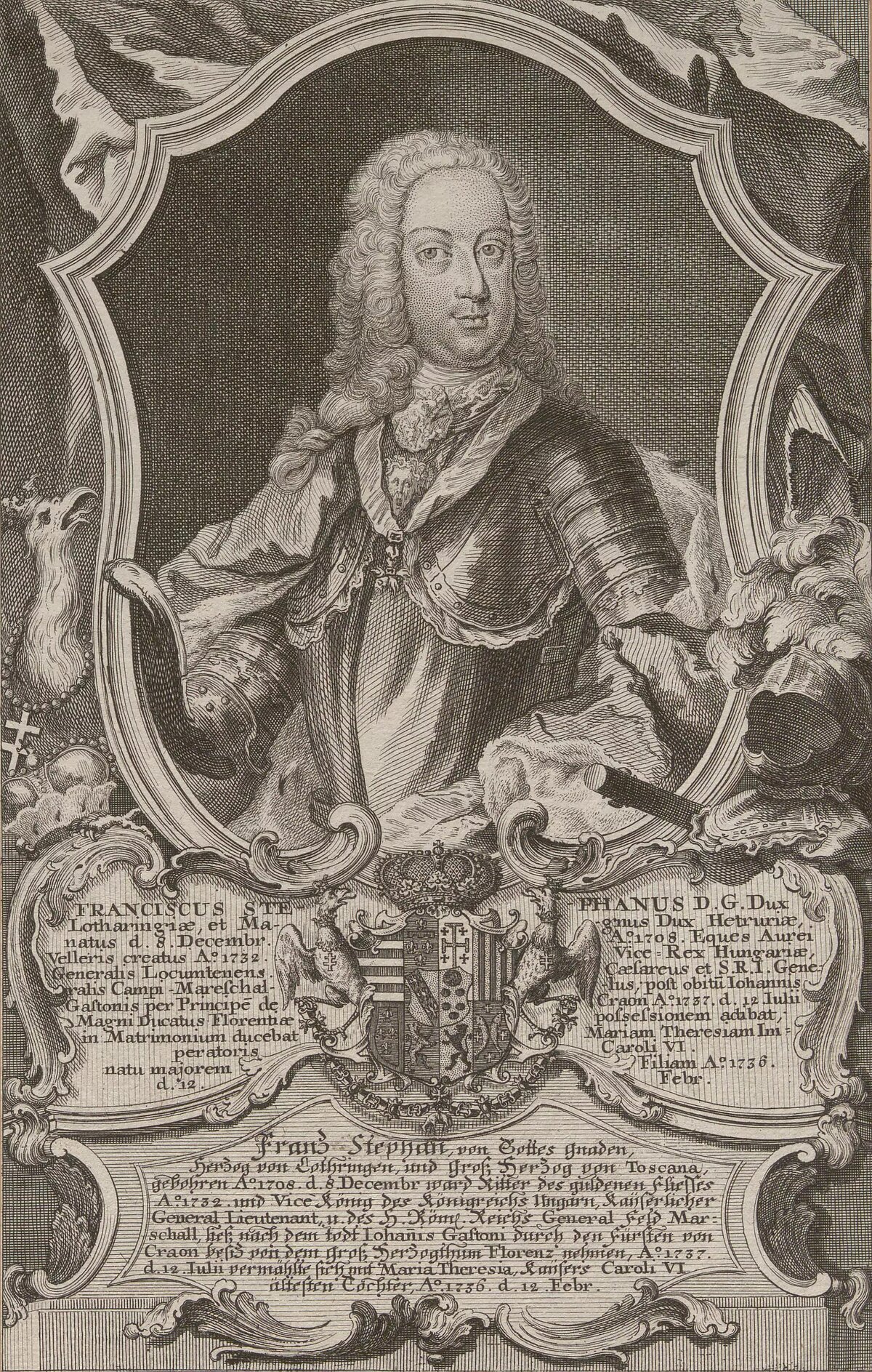Flora et Germana
The year following his marriage to Maria Theresa of Austria (1736) witnessed another event that was decisive for the later political rise of Francis Stephen of Lorraine (1708-1765) to become Holy Roman Emperor (1745): his coronation as Grand Duke of Tuscany in 1737.
To celebrate this event in Vienna, Carlo Arrigoni (1697-1744), one of the most important musicians of the Florentine music chapel, composed the Festa da camera “Cinto il crin di sacro alloro”, which was performed at court between late 1737 and 1738 as an act of cultural diplomacy in the run-up to the imperial couple's first and only journey to the new state (January to April 1739). This musical production, which survived in two manuscripts in the Vienna Court Library and is still completely unknown to music historical research, is still a source of extraordinary interest for Viennese history and thus also for understanding Austrian diplomacy in Europe in the first half of the 18th century. Francis Stephen was the first foreign monarch in the history of Tuscany after centuries of Medici rule. In October 1737, a delegation of Tuscan ministers travelled to Vienna to visit the new Grand Duke. Arrigoni's presence at the Viennese court coincides with this period and not later than beginning of 1738, during which he was appointed "Maestro di Camera" of Franz Stephan - a title he retained also after his return to Florence.
Arrigoni's Festa da camera is a large-scale musical work for three voices, choir and orchestra. Designed as a cultural-political programme, the text reflects Franz Stephan's interests, especially for art and science. The personifications of painting, sculpture and architecture engage in a conversation about the reconstruction of an ephemeral "temple", which is probably to be understood as an allegory of the new Austrian Empire. This provides an opportunity to portray the transition of the protection of the arts from the Tuscan state, identified with the figure of "Flora" - Florence and the Medici family - to that of "Germana", meaning Vienna and the newly instituted Habsburg-Lorraine line. Moreover, the reference to the glorious scientific tradition of Tuscany with the astronomer and father of modern science, Galileo Galilei (1564-1642), is not missing. And finally, the idea of integrating the statues of six Tuscan popes into the architectural structure is to be understood as an explicit homage to the Church and the then tuscan Pope Clement XII, born Lorenzo Corsini (1652-1740).
The project, funded by the City of Vienna, provides a critical edition of the Festa da camera. It will also examine the dynamics of cultural diplomacy that the future Austrian emperor displayed towards his political interlocutors - the Viennese court, the papacy and the Tuscan grand duchy. The edition will be published in three languages - German, English and Italian - in order to facilitate a wider scholarly dissemination of the publication not only for the musicological community, but also for historians and researchers on Franz Stephan of Lorraine and Maria Theresa of Austria.

Project Duration
1 October 2023 – 30 September 2024
Contact
Links
musicology department project website
